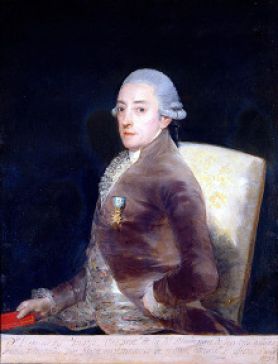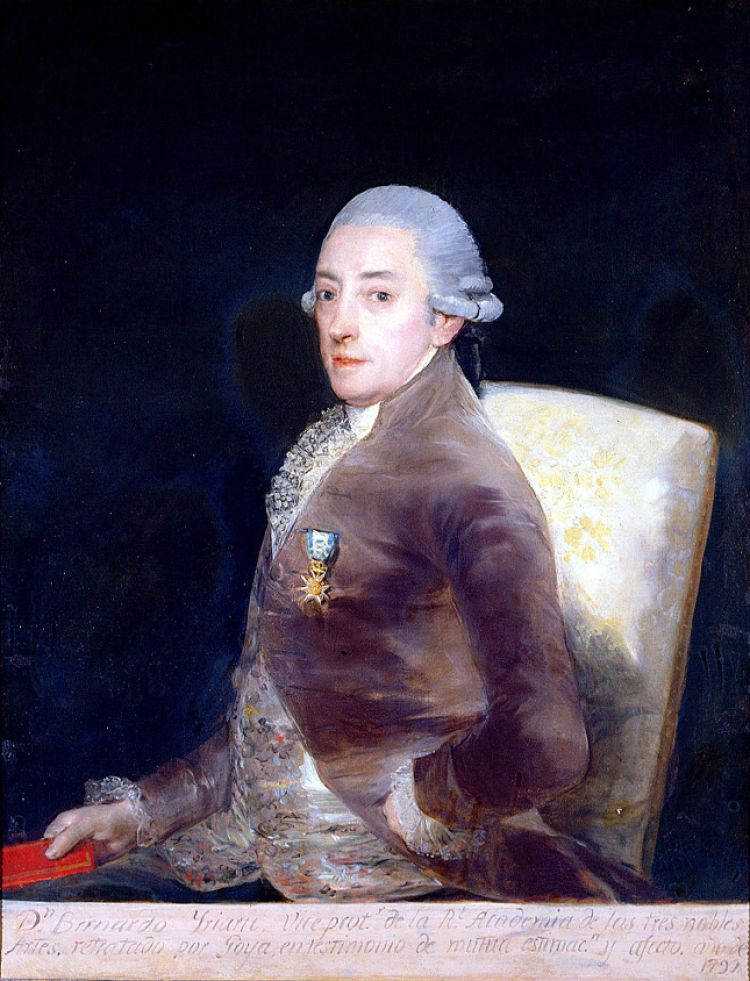Portrait of Don Bernardo de Iriarte

As you can see from the inscription at the bottom of this picture, this is a portrait of Don Bernardo de Iriarte, painted by Goya in 1797. Iriarte, an important statesman, expressed his closeness to the artist in describing this work as a “testimony of esteem and mutual affection“. A Minister of Charles IV of Spain and later of Joseph, the brother of Napoleon I, Iriarte ended up in exile and in 1814 died in Bordeaux like Goya.
But before that, he was one of the ilustrados, men who were concerned to bring sparks of the Enlightenment into a very reactionary Spain. Goya himself was won over to the enlightened ideas of these reformers, though they were rapidly liquidated by the Inquisition and its flood of persecutions.
In 1794, emerging from a serious illness, and to prove that he had recovered all his faculties, Goya sent some small works to the Royal Academy of the Three Noble Arts. This is how Iriarte, then vice-protector of this Academy, came into contact with him. Three years later, Goya painted a portrait of the new Minister of Agriculture, Trade, Shipping and Overseas Possessions.
When presented to the Academy, this painting was "praised not only for its resemblance, but also for the mastery with which it had been painted". The already “impressionist” rendering of the jacket's velvet - a real exploit - is enough to establish Goya as Vélasquez's only successor in the portrait field.
